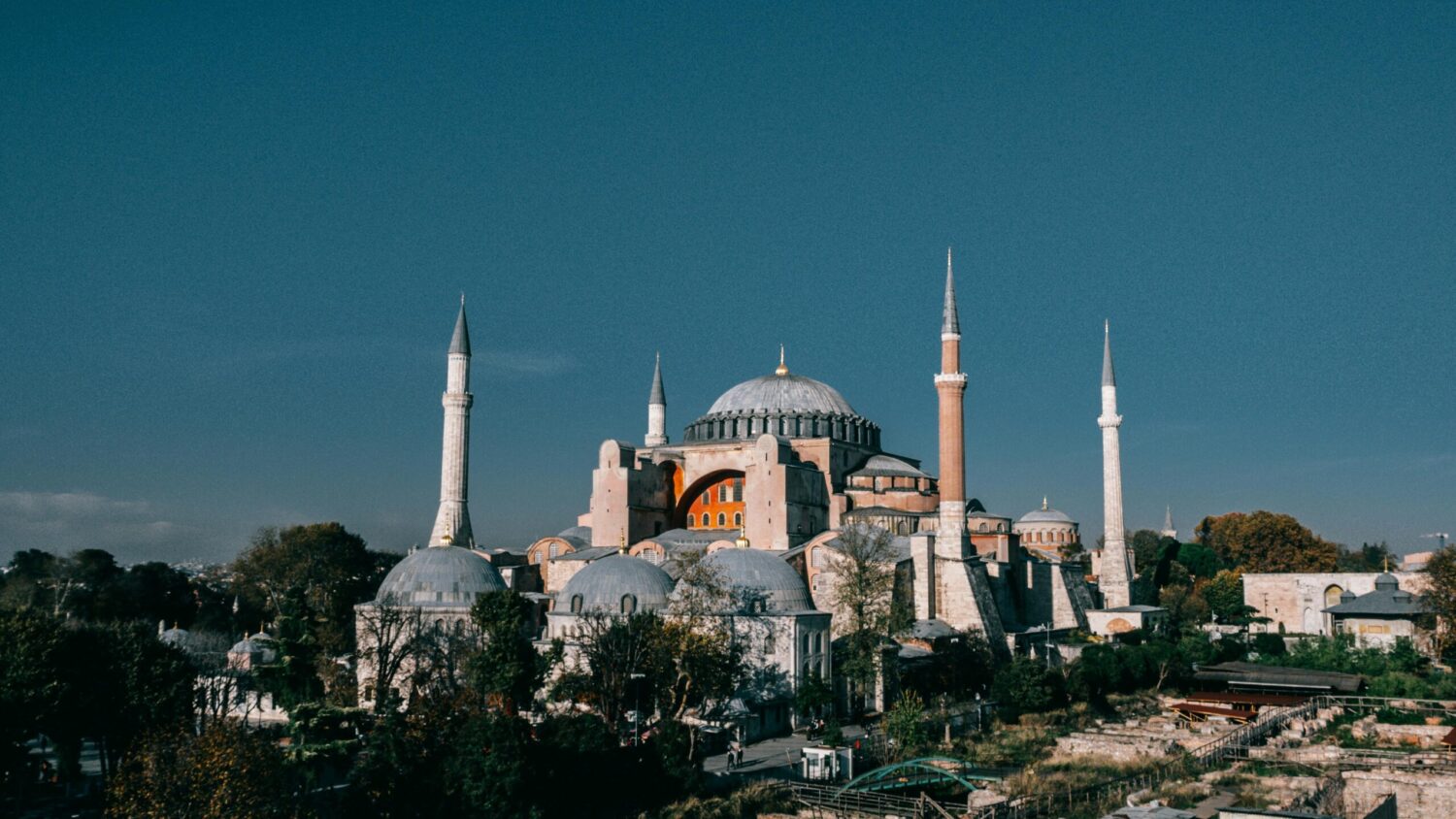As the holy fasting month of Ramadan for Muslims approaches, Fatih Municipality teams in Istanbul carried out cleaning and disinfection activities at the converted Hagia Sophia mosque.
Teams of the Municipal Directorate “Environmental Protection and Control” cleaned the interior and surroundings of the historic building.
Carpets were vacuumed, shoe racks and the inside of the mosque were sprayed with disinfectant. The fountains for ritual washing “abtest”, the courtyard of the mosque and the square “St. Sofia” were washed with hot water and disinfectant.
After the cleaning process inside and outside the mosque was sprinkled with rose water, a traditional method that dates back to the Ottoman Empire era.
Fatih Yildiz, a municipal official in charge of the cleanup, said the mosque was cleaned with a team of 20 people, noting, “The work will continue throughout Ramadan. Rose water will be sprinkled in the mosque every night during the holy month. The aim is to provide a cleaner worship environment for citizens visiting the mosque.”
The huge “Mahya” – the light inscriptions with hundreds of light bulbs between the minarets with the inscription “La ilaha illallah” (“There is no God but Allah”) was hung between the minarets of the Grand Mosque of Hagia Sophia.
The centuries-old tradition of Mahya, which decorates mosques during the Islamic holy month of Ramadan, began to be hung in mosques in Istanbul from Monday.
Kahraman Yildiz, the master of Mahya, commented: “The largest letters are in the Hagia Sophia mosque. It is difficult, but worth the effort, because the inscriptions can be read from tens of meters away. It’s actually craftsmanship and it’s hard, it’s hard work, but it looks very beautiful visually.”
Hagia Sophia was built in 532. It served as a church for 916 years. It was converted into a mosque in 1453 after the capture of Istanbul.
After the founding of the Republic of Turkey, the historic building was a museum for 86 years, but on July 24, 2020, with the decision of President Erdogan, it was officially reopened for worship under the name Hagia Sophia Grand Mosque.
In 1985 Hagia Sophia was added to the UNESCO World Heritage List.
Hagia Sophia is also among the most popular tourist destinations in Turkey and remains open to local and foreign visitors.
Tourists pay a fee of 25 euros for a visit to Hagia Sophia Illustrative Photo by Meruyert Gonullu: https://www.pexels.com/photo/medieval-mosque-in-istanbul-city-6152260/












